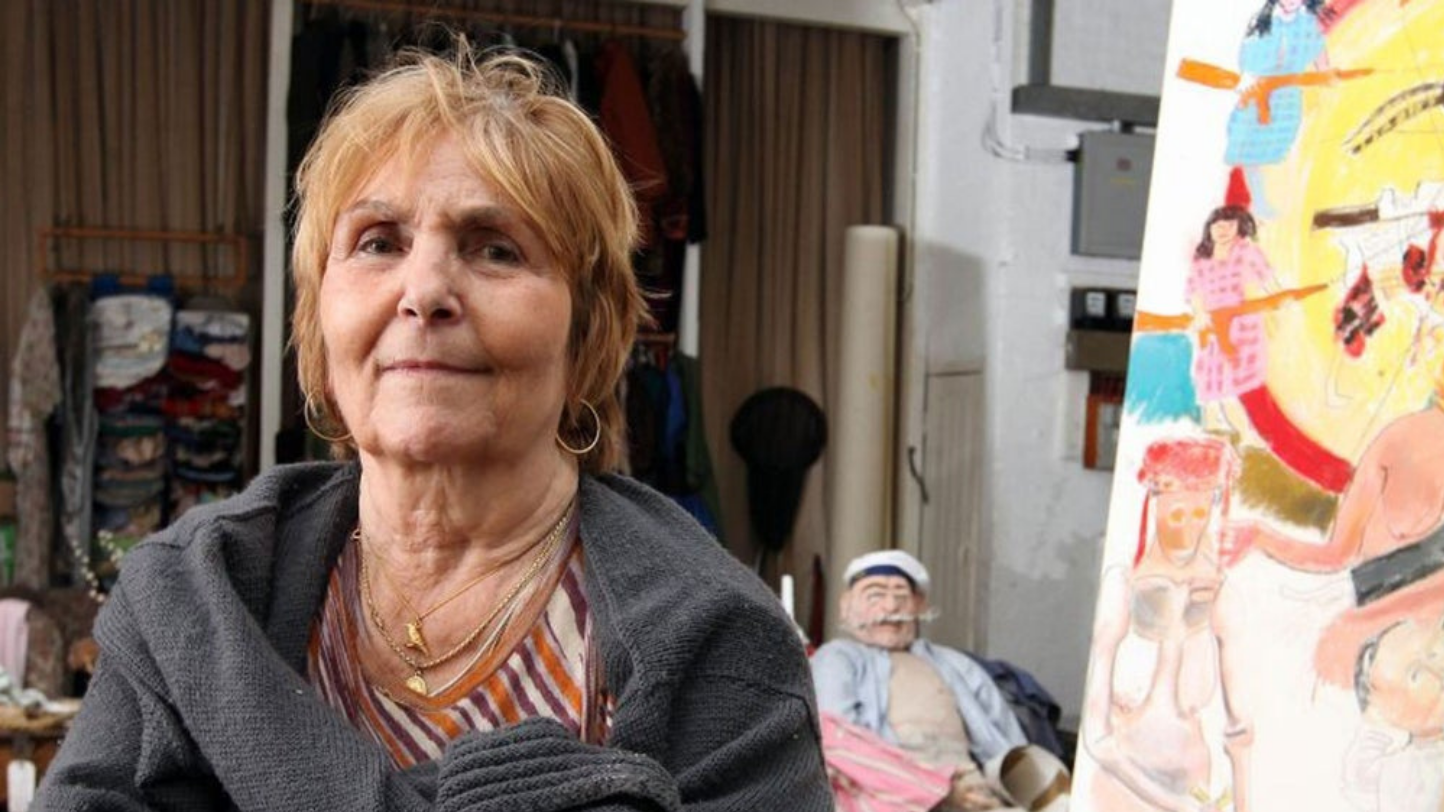
“Without history there is no design” — Paula Rego
The Portuguese artist Paula Rego He is currently an influential figure, both in the artistic and social world. The British newspaper Financial Times included Paula Rego in the list, released annually, in which 25 women from all over the world from different industries are celebrated, with a leading role in the previous year. Throughout his career, Paula Rego has been building a visual language that combines literary references mainly from works from the 19th and 20th centuries with autobiographical elements.

Who is it Paula Rego?
Paula Rego was born in the Portuguese capital, in 1935, in the middle of the Estado Novo. This regime and social prosperity abroad encouraged his family to decide that his studies would be at the Slade School of Fine Art, in England. At the age of 16, she joined this institution, where she met her husband, also a painter Victor Willing. Paula Rego plays a fundamental role in figurative art, revolutionizing the female presence in the artistic field by exalting the role of women, their pleasures and challenges but also by denouncing political authoritarianism, injustice and violence. His figurative and narrative works, often considered shocking, were inspired by different elements of high art and popular culture, but are never conservative.

The vivacity in the works of Paula Rego
The turning point in his work came with the girl and the dog series. “In it, the female figure clearly takes the lead in the action, while the dog is subdued and caressed. The girl plays mother, friend, nurse and lover, in a game of seduction and domination that continues in later works. Technically, the figures gain volume, the space gains solidity and autonomy, the scenographic perspective is set.” Since the 1960s, she has lived in London, which gave her internationality, especially since 1987, when she signed with the Marlborough Fine Art gallery. The death of her husband, also in that year, is noted in works such as The Cadet and the Sister, The Departure, The Family or The Dance, from 1988. In the following decade, highlights include the works Tempo – Pastado e Presente (1990-1991) and the series of pastel paintings entitled Dog Woman, which marks the beginning of a new cycle of symbolic women. Demonstrating a critique of the result of the first referendum on abortion, held in Portugal in 1997, he paints Abortion (1997-1999). These works of Paula Rego which were extremely important for the positive result of the second referendum on abortion in Portugal. Currently, she is one of the most recognized Portuguese artists, mainly for her realistic works that follow the line of Goya, Hogarth and Beckmann, and for having explored various techniques — from painting to collage, drawing and engraving, constantly constructing singular and idiosyncratic situations, in any medium.
 "The dance" in Paula Rego, 1988
"The dance" in Paula Rego, 1988
To know Paula Rego
At Gallery 111 the exhibition is on display Longing with three dozen works, covering diverse themes, techniques, and personal stories. As mentioned in the Visão article, the exhibition is "a time capsule, measuring the transformation of its naturalistic and figurative features, the expressiveness of bodies in series such as the one dedicated to Charlotte Brontë's Jane Eyre, the autobiographical scenes that reveal the prolonged illness of the artist's husband, Victor Willing (1928-1988) , the surprising notes – such as Futebolista (2010), with a Paula Rego in sports poses; or the three striking works dedicated to Mary Magdalene, paintings recovered from the cycle of the Virgin Mary (Anunciação, 2002), which refer to the voice (or lack thereof) of women – a constant militancy of the artist."

In addition to this exhibition space, you can visit the Casa das Histórias Paula Rego, an institution dedicated to the artist with seven rooms that house an extensive work of painting, drawing, engraving, from the collection started in 2009, allows you to follow the artistic evolution of Paula Rego and its figurative language. In this creative journey, reflection on personal and social events is implicit. An example of this are works such as The Siege (1976), a painting evocative of the Siege of Lisbon, in 1384, imposed by the troops of Castile, to which curator Catarina Alfaro attributes a “tragic tension that reflects the personal history of Paula Rego, his artistic isolation and the disappointment felt in the aftermath of the Revolution of April 25, 1974 in Portugal”. The collection is dominated by creations made in the 1980s, with the curator saying: “During this decade, Paula Rego expresses his desire for artistic liberation, to 'do more directly'. The presence and confrontation with his emotions through painting are triggered when he establishes a radically new visual language to tell his stories, creating a complex and ambiguous universe in which animals are creatures with human qualities and behaviors, thrown into peculiar situations , vivid dramas that noisily invade the painting.”
In 2017, the documentary about the painter, “Paula Rego, Stories & Secrets” The director, Nick Willing, the artist's son, worked without a defined script, letting his mother's life dictate the direction the documentary would take. “At the age of 80, and to my surprise, the mother agreed to talk about her life with me and began to tell me stories that she had never told me or that she had never told me in that way, without tricks.” – Nick Willing

From Annunciation to Adoration: Christmas told by Paula Rego
The Abortion
The Representation of Animals in Art
Tile in Portugal
